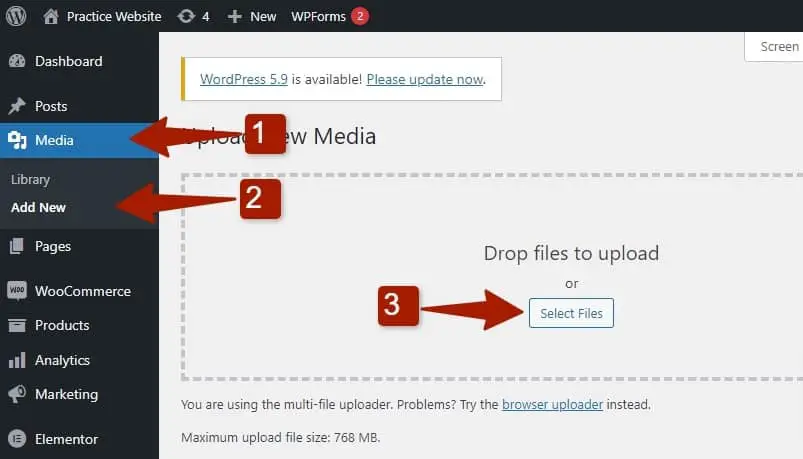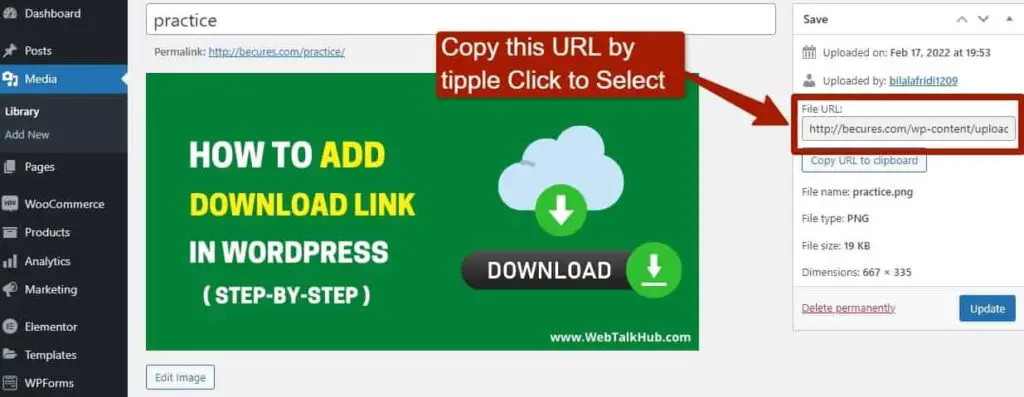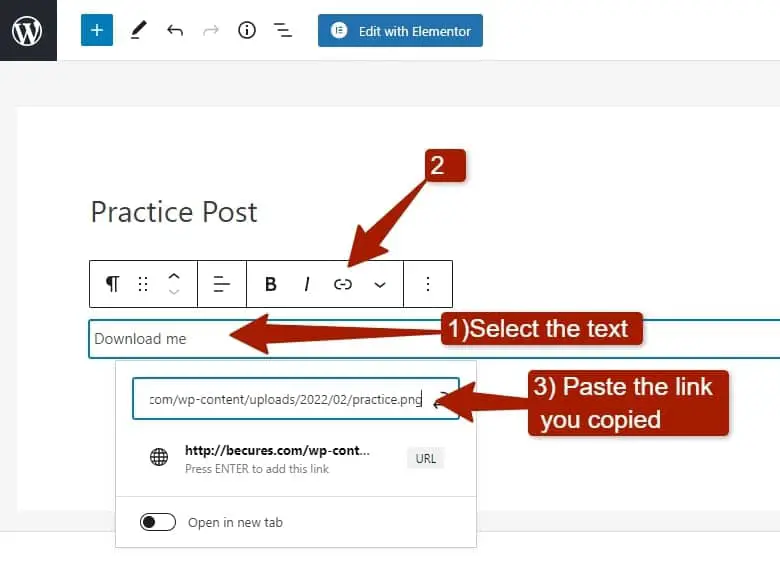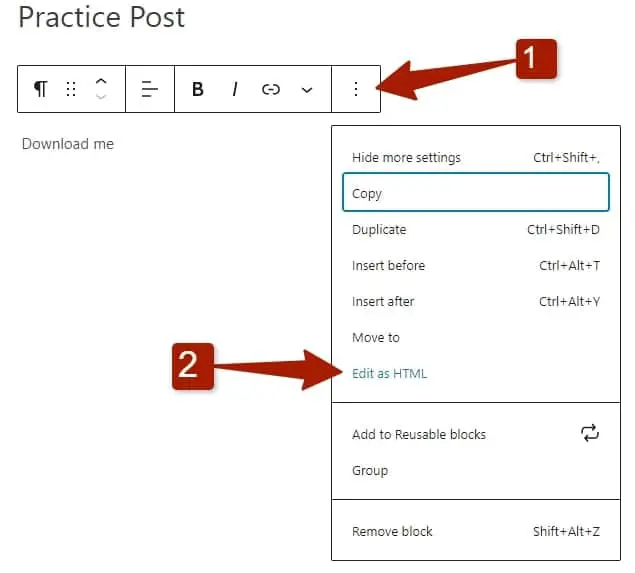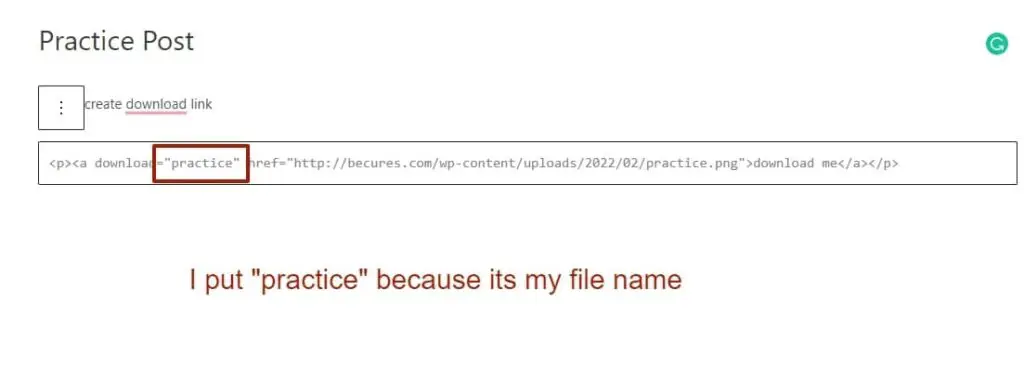Are you looking to share files, documents, or resources with your WordPress website visitors? Adding a download link can be a great way to provide valuable content for your audience. In this step-by-step guide, we’ll walk you through the process of how to add a download link in WordPress, whether it’s a simple link or a stylish download button.
Why Add a Download Link?
- Provide Resources: Offer downloadable resources like e-books, whitepapers, and guides.
- Enhance User Experience: Allow visitors to easily access and save important documents.
- Boost Engagement: Increase visitor interaction with your website by offering valuable content
How To Add A Download Link In WordPress
If you want to give the downloadable file in your post or page, you’ll have to insert a downloadable link. After reading this blog post, you’ll be able to make links downloadable.
Let’s begin now!
Step 1: Get the Download File URL
Before you can create a download link, you need to have the URL of the file you want to make available for download. This could be a PDF, a document, an image, or any other type of file.
Upload the File:
- If you haven’t already, log in to your WordPress dashboard.
- Go to the Media Library and click on “Add New” to upload the file you want to share.
- Once uploaded, copy the file’s URL.
Step 2: Add Download File Link on Your Post
Now that you have the file URL, you can create a download link in your WordPress post or page.
- Open Your Post: Create a new post or edit an existing one.
- Add Link: Select the text or image you want to turn into a download link. Click the “Add Link” button in the toolbar (looks like a chain link).
- Insert URL: In the link popup, paste the file URL you copied earlier into the “URL” field.
- Set Link Text: Enter the text that you want to display for the link. This could be something like “Download Now.”
- Open in New Tab (Optional): If you want the file to open in a new tab when clicked, click the “Open link in a new tab” option.
- Apply Changes: Click the “Add Link” button to create the download link.
How to Make the File Download Automatically
By default, when a user clicks a download link, the browser might display the file in a new tab or window. However, if you want the file to be downloaded automatically, you can add a special attribute to the link.
- Edit Link: In the post editor, locate the edit as the HTML.
- Insert Attribute: Add
downloadto the link’s HTML, like this:<a href="file-url-here" download>Download Now</a>. This attribute prompts the browser to download the file rather than open it.
How to Create a Download Button
If you prefer a more visually appealing way to present your download link, you can create a download button using a combination of HTML and CSS.
- HTML: Insert the following HTML code in the HTML editor of your post:
<a href="file-url-here" class="download-button">Download Now</a>
CSS: Add custom CSS to style your download button. You can do this in your theme’s stylesheet or through a customizer:
.download-button {
display: inline-block;
padding: 10px 20px;
background-color: #007bff;
color: #fff;
text-decoration: none;
border-radius: 5px;
}
.download-button:hover {
background-color: #0056b3;
}
Final Thoughts
Adding a download link to your WordPress post or page is a simple process that enhances your website’s functionality and user experience. Whether you choose a basic text link or a stylish download button, your visitors will appreciate the convenience of accessing your valuable resources. Remember that making files download automatically and adding visual flair through custom styling are options to consider, based on your preferences and the needs of your audience. Now you’re ready to engage your readers with downloadable content seamlessly!
You May Like:
Using FTP to Upload Files to WordPress [Beginner’s Guide]
How to Fix the critical Error in WordPress
FAQs
Can I only add download links to files hosted on my website?
No, you can add download links to files hosted on external websites as well. Just use the external file’s URL when creating the download link.
How can I upload a file to WordPress for download?
To upload a file, log in to your WordPress dashboard, navigate to “Media” > “Add New,” and select the file you want to upload. Once uploaded, you can copy the file URL to use in your download links.
What types of files can I offer for download?
You can offer a wide range of file types for download, including documents (PDFs, Word documents), images, audio files, videos, and more.
How do I make a file download automatically when clicked?
To make a file download automatically, add the download attribute to the download link’s HTML. This prompts the browser to initiate the download instead of opening the file.
Can I track how many times a file is downloaded?
Yes, you can track file downloads using various WordPress plugins. Some popular options include “Download Monitor” and “WordPress Download Manager.”
Can I style the download link to make it more visually appealing?
Absolutely! You can add custom CSS to style your download link or button. You can adjust attributes like color, background, padding, and more to create an attractive download button.
Is there a way to prevent non-logged-in users from accessing the download link?
Yes, you can restrict access to download links for non-logged-in users by using membership plugins or password protection options in WordPress. This helps in controlling who can access your downloadable content.
Can I add download links in places other than posts and pages?
Yes, you can add download links in various areas of your WordPress website, including widgets, sidebars, and even custom post types. Just insert the HTML code for the link in the desired location.
What if the file I want to offer for download is large? Will it affect my website’s performance?
Large files can slow down your website’s performance and consume server resources. It’s recommended to host large files on external platforms designed for file hostings, such as Dropbox, Google Drive, or a dedicated file hosting service.
Is it possible to track who has downloaded a file?
WordPress itself doesn’t provide built-in user tracking for file downloads. However, using advanced analytics tools or third-party plugins may allow you to gather more detailed insights into user interactions.

